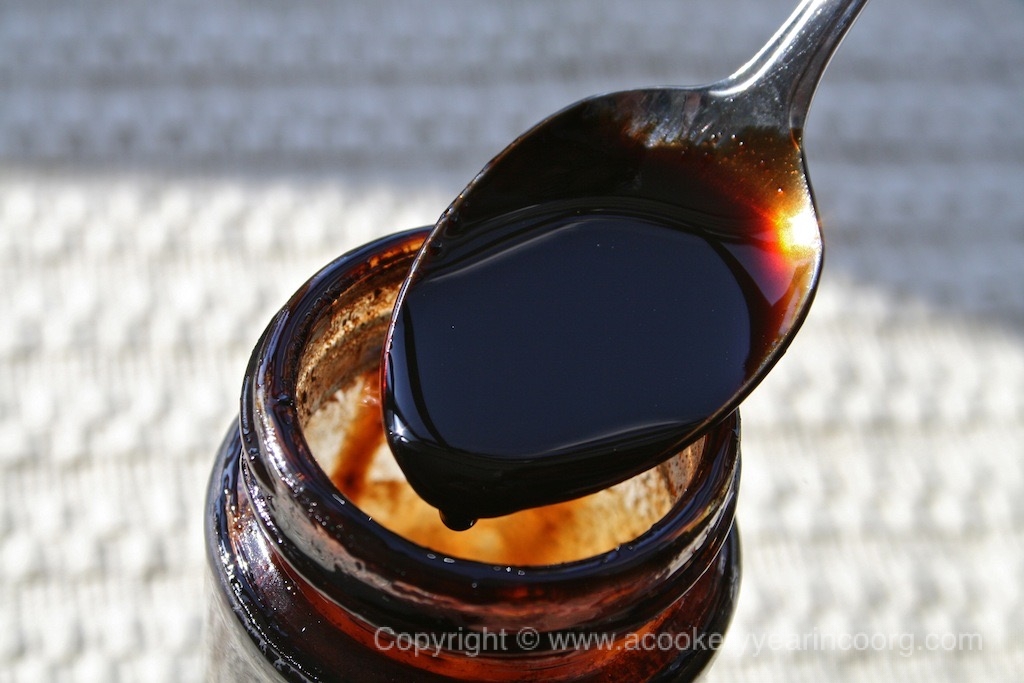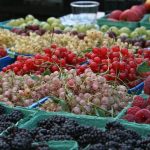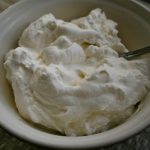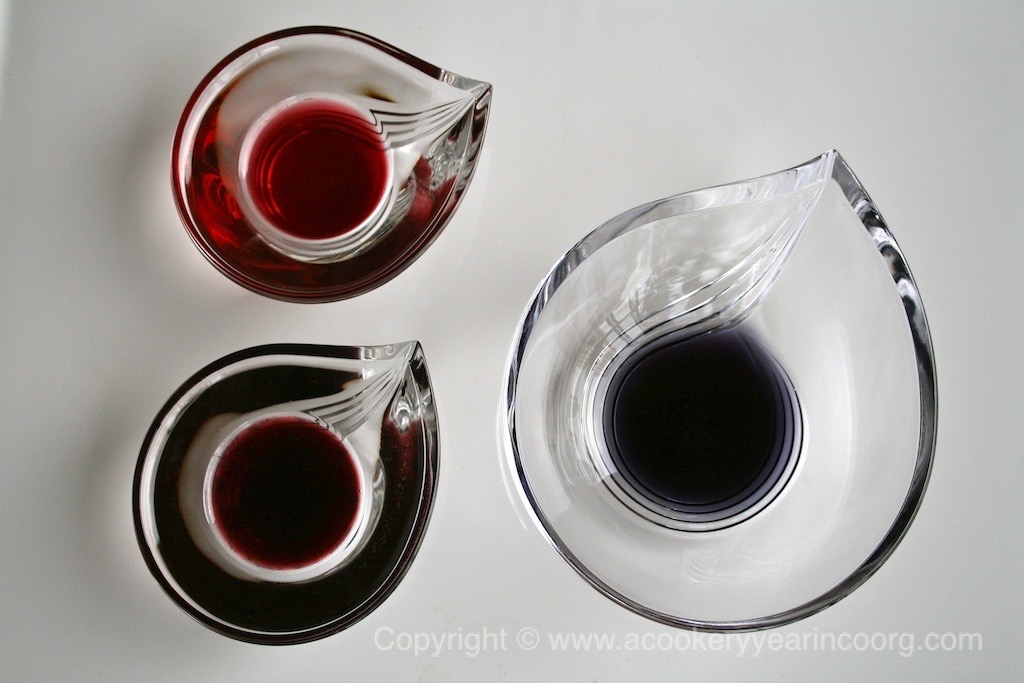Kachampuli
The most commonly used souring agent in Kodava cooking, that “vinegar” is really the concentrated juice of Garcinia gummi-gutta, the same fruit that is used in dried form in parts of Kerala, where it is known as punampuli or kudampuli. It is a relative of kokum, which is used in some Mangalorean, Konkan and Maharashtrian cuisines. In the Kodava language, the fruit is known as panapuli, while the boiled extract is kachampuli.
Possibly because the tree fruits during the monsoon months, making it difficult to dry and store in large quantities, the preservation of panapuli in Coorg takes a unique form. The result is kachampuli – a potent, concentrated, souring agent. It also has a very long shelf life. Every Coorg home has a bottle of kachampuli at the ready at all times! My mother made sure to carry a bottle with her as we travelled the length and the breadth of the country on various postings. I have bottles of the extract that are more than 12 years old, and while it does lose the fruitiness of younger batches, the sour power is quite intact!
Kachampuli is usually used in the final stages of cooking, mainly in meat and fish dishes, most famously in pandi (pork) curry.





